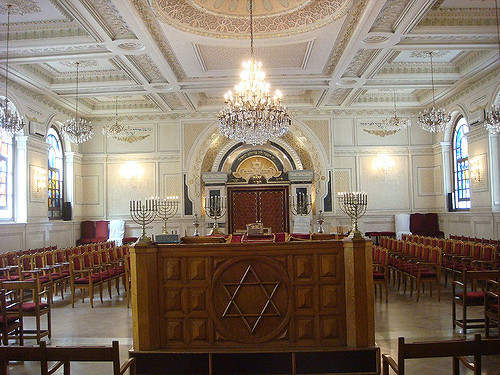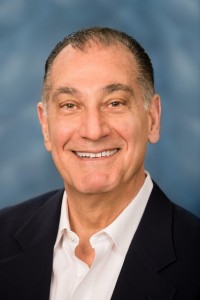Updated
The Passing of the Chief Moroccan Rabbi: Part of a Continuing History — Ambassador Edward M. Gabriel (ret.)

Inside Bet El synagogue Casablanca Photo: David Lisbona
Ambassador Edward M. Gabriel (ret.)
August 13, 2018
 The Chief Rabbi of Morocco, Aharon Monsonego, passed away on Tuesday morning, August 7th. Rabbi Monsonego was the head of the Rabbinical Court in Morocco, having served since 1998. He was the son of Yedidya Monsonego, former rabbi of Fez, and much respected in Morocco as a religious scholar and advocate of dialogue among the Abrahamic faiths. He was also the head of the Talmud Torah school in Casablanca, with more than 1500 students.
The Chief Rabbi of Morocco, Aharon Monsonego, passed away on Tuesday morning, August 7th. Rabbi Monsonego was the head of the Rabbinical Court in Morocco, having served since 1998. He was the son of Yedidya Monsonego, former rabbi of Fez, and much respected in Morocco as a religious scholar and advocate of dialogue among the Abrahamic faiths. He was also the head of the Talmud Torah school in Casablanca, with more than 1500 students.
The role of chief rabbi in Morocco is especially important to the country, given the importance of the Jewish religion and culture. The presence of Jewish people dates as far back in North Africa to the destruction of the second temple in 70 A.D.
Of great significance, Morocco’s constitution is the only one in the Arab and Muslim world that recognizes the importance of its Jewish population as a part of the country’s diversity and heritage. Moroccans frequently describe their country as a tolerant, moderate Arab country, and they often define this special character as a result of the Jewish influence and heritage over the past two millennia and especially the last five centuries.
With the expulsion of Jews and Arabs from the Iberian Peninsula by Queen Isabella and King Ferdinand in the late 15th century – the same period that America was being (so-called) discovered by Columbus – Jews sought refuge among the Moors of Morocco. Their early graves can be seen today in a number of cemeteries throughout the country, the earliest dating to 1492. Jews of Morocco assimilated well into Moroccan culture, to the point where today the customs of Jews and Arabs are intermingled and many of their holidays shared. Since early times Jews have served as economic and international affairs advisors to the Kings (or Sultans) of Morocco. Today, André Azoulay, who has now served more than four decades to two Kings of Morocco – Hassan II and Mohammed VI – is the only Jewish advisor to an Arab head of state in the Middle East.
One holiday that is shared is the end of Passover, or “Mimouna”, when Muslim neighbors bring gifts of flour, honey, milk, butter, and green beans used to prepare chametz dishes to the homes of their Jewish neighbors. It is one of the warmest and kindest displays of friendship and religious acceptance among these two religions in the world.
At the height of their population, more than 250,000 Jews lived in Morocco, and although there are only 3,000 today, they are an important and influential group. Morocco is the second largest country of origin in Israel, only surpassed in recent decades by Russia. The strong family ties between the two countries have affected the close bonds between them and their peoples. Israeli and American-Jewish tourism to Morocco is robust, as is Moroccan-Jewish tourism to Israel. For most American Jews, Morocco is one of the few Arab countries where they are warmly welcomed and feel safe.
Many tour companies specialize in Jewish tourism to Morocco, with visits to its dozens of synagogues, cemeteries, and merchant neighborhoods in Rabat, Marrakech, Fez, Meknes, and throughout the rest of the country. In Casablanca one can visit the Jewish museum, its schools, restaurants, and its senior and community centers. In Rabat, David Teledano is head of the Jewish community; in Marrakech Jacky Kadouch; and the head of the entire Moroccan Jewish community is Serge Berdugo, who lives in Casablanca. They spend many of their days hosting American Jewish and Israeli leaders who visit Morocco on a regular basis in search of dialogue and better understanding of the relationship between the Arabs and Jews.
Morocco also has a rich political history with Jews and Israel. Since 1492 Moroccan Sultans and Kings have protected the Jewish population, most notably during WWII when King Mohammed V blocked efforts by Vichy officials to impose anti-Jewish legislation in Morocco and deport the country’s 250,000 Jews to their deaths in Nazi concentration camps in Europe. The sultan’s stand was based on his claim of sovereignty over “all” his subjects, including the Jews.
King Hassan II continued his father’s tradition and was a principal ally of the US in advancing Arab-Israeli peace proposals during the later decades of the 20th century. King Mohammed VI built on his father’s legacy, taking important stands on several peace initiatives, including the “Clinton Parameters.”
When, at the end of 2000, President Clinton was pushing to find peace between Israel and Palestine, he proposed the “Clinton Parameters” and asked King Mohammed VI to encourage President Arafat to accept them. On Christmas Day 2000, the King, during a meeting with me as US Ambassador to Morocco, not only agreed to visit with Arafat but also indicated that he had the added ability to talk to the Israelis. A few days later, Shimon Peres arrived in Rabat to meet with the King where he was given assurances that such a deal between the parties would result in a warm and advantageous relationship with Morocco. Unfortunately, the parties missed the last best opportunity for peace since that day, but it was not for a lack of trying by King Mohammed to press both parties, one of the few Arab leaders to do so.
Perhaps most telling of late was King Mohammed’s strong reaction to Iranian comments that the Holocaust didn’t exist. In fact, he describes the Nazi destruction of Jewish lives as “one of the most tragic chapters of modern history… the universal heritage of mankind.” He goes on to say that “Amnesia has no bearing on my perception of the Holocaust, or on that of my people.”
As one can see, the passing of Rabbi Monsonego is more than a simple issue of who will replace him. It is a seminal event for the country as it ensures its continuous history of the past five hundred years with the Jewish people.